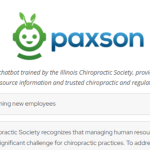
Neurocognitive Disorders in Society
Throughout history, there has been a debate of where the seat of intelligence and cognition lives, with Hippocratic doctors arguing in favor of the brain, while Aristotle argued in favor of the heart as the dominant organ for sensation, cognition, and movement. Over time, the brain’s dominant role in cognition has become more apparent, and this has been depicted in the history of the arts.
Read More
















![Informed Consent [Template Included]](https://ilchiro.org/wp-content/uploads/sites/2/2014/04/WP-Template-4-150x150.png)





